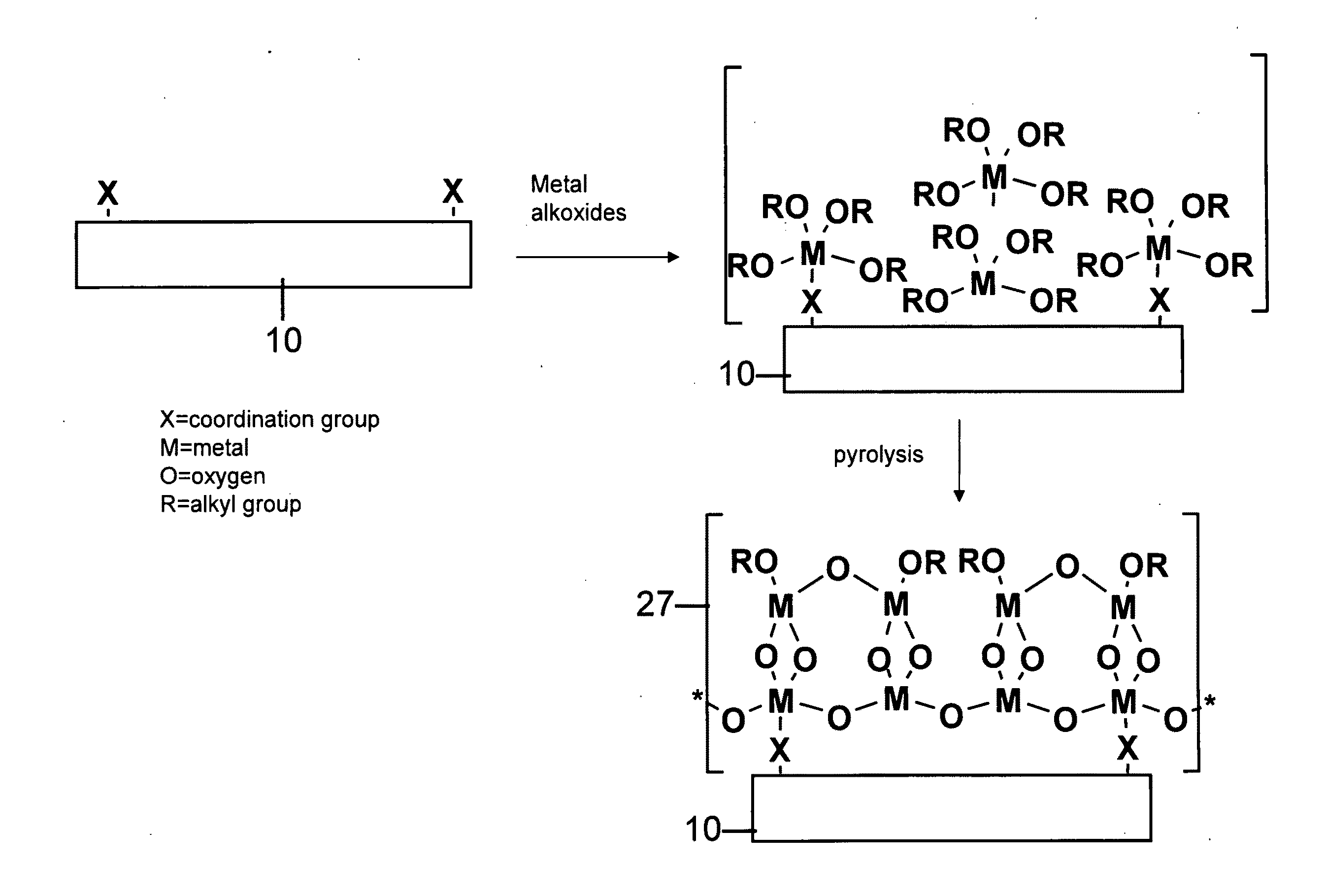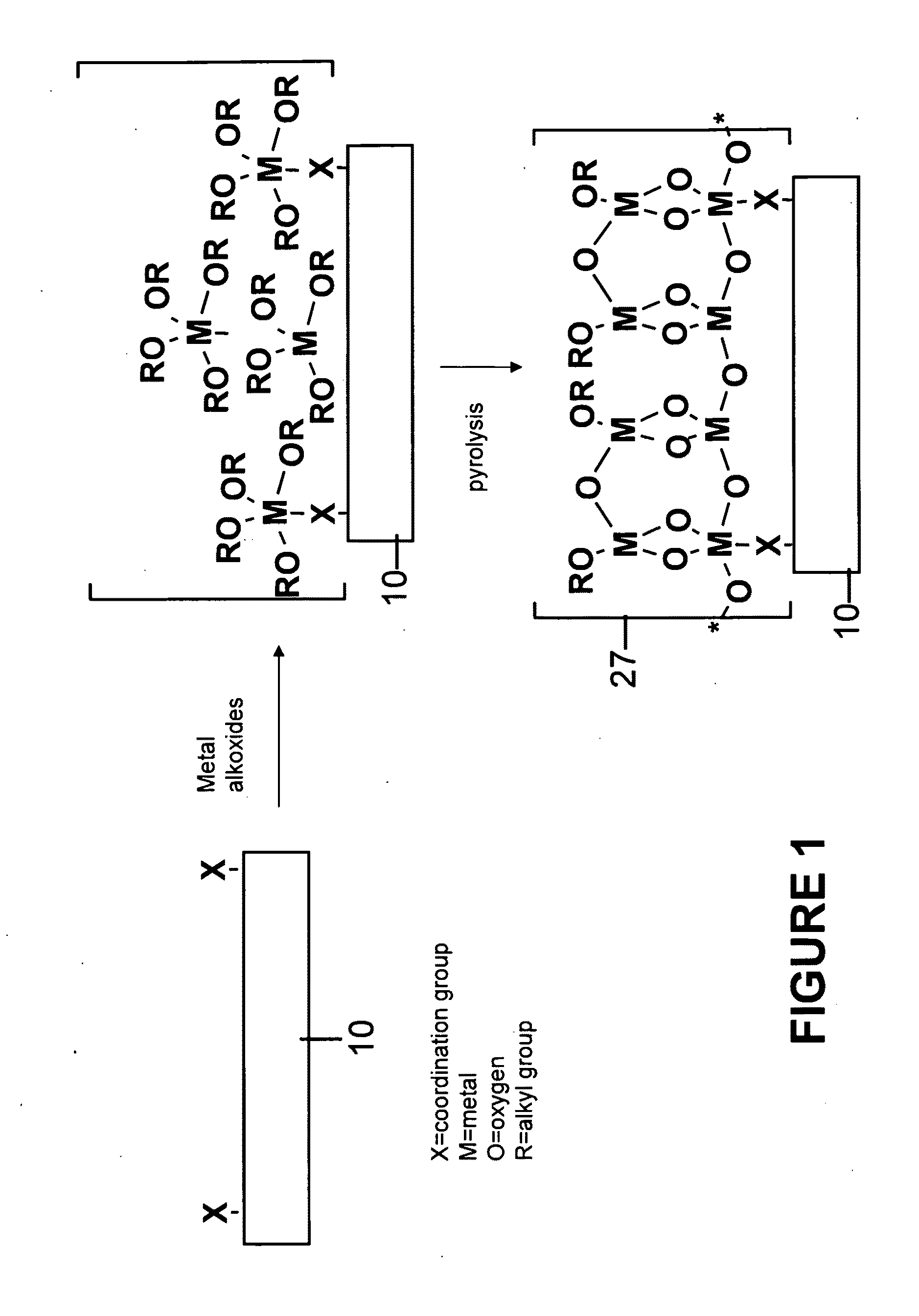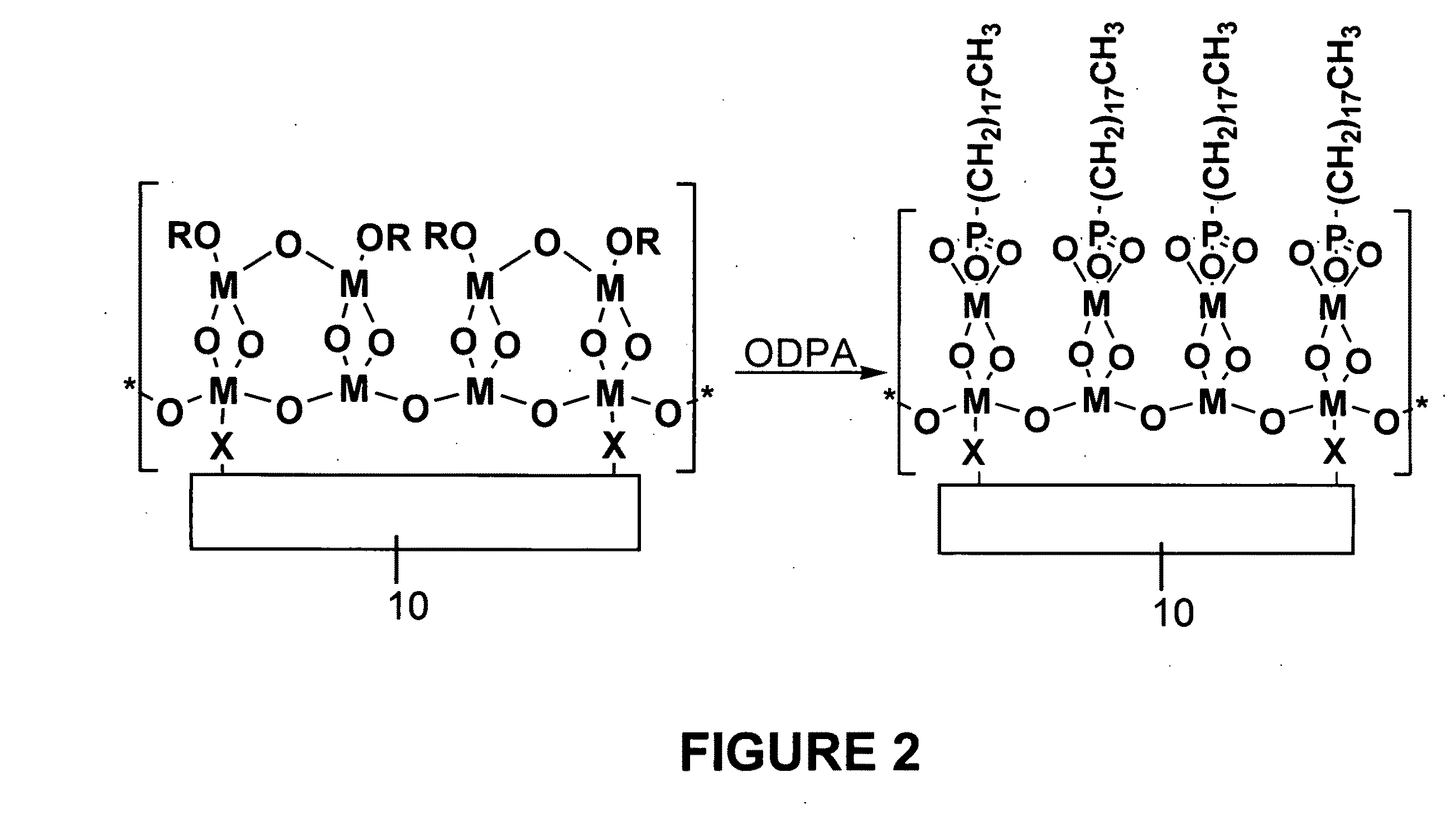Functionalized substrates and methods of making same
a functionalized substrate and substrate technology, applied in the field of functionalized substrates, can solve the problems of poor mechanical attachment between the substrate and the coating, poor electronic communication between the substrate surface and the coating, and poor surface conformation of the layer, and achieve the effect of high loading
- Summary
- Abstract
- Description
- Claims
- Application Information
AI Technical Summary
Benefits of technology
Problems solved by technology
Method used
Image
Examples
example 1
Formation of a Zirconia Thin Film on Polymer Substrate
[0057]All reagents were obtained from Aldrich and were used as received unless otherwise noted. PET, PEEK, and nylon 6 / 6 were obtained from Goodfellow, Inc. Acetonitrile was dried over CaH2; and tetrahydrofuran (THF) was dried over KOH overnight. Both were distilled prior to use. Surface modified samples were analyzed using a Midac M25 10C interferometer equipped with a surface optics SOC4000 SH specular reflectance head attachment. Fluorimetry experiments utilized a Photon Technology International Fluorescence Spectrometer.
[0058]Polymer substrates (nylon 6 / 6, PET or PEEK) were placed in a deposition chamber equipped with two stopcocks for exposure either to vacuum or to the vapor of zirconium tetra(tert-butoxide). The chamber was evacuated at 10−3 torr for 1 hour and polymer slides were exposed to vapor of zirconium tetra(tert-butoxide) (with external evacuation) for 1 minute followed by 5 minutes exposure without external evacu...
example 2
Reaction of Phosphonic Acid with Activated Polymers
[0060]Activated polymers produced in Example 1 were placed in a 0.1 mM solution of octadecylphosphonic acid (ODPA) in THF for 1 hour, giving phosphonate-bound polymer surfaces (with reference to FIG. 2, where M=Zr, and R==tert-butyl). Phosphonate-derivatized surfaces are effective at binding bio- or other classes of molecules.
Example 3
Metallization of Activated Polymers
[0061]Activated polymers produced in Example 1 were treated with an aqueous solution of a copper salt, which was absorbed onto the zirconium oxide adhesion layer. Treatment with either sodium borohydride or an amine borane gave a copper-coated polymer (with reference to FIG. 3, where M=Zr, and R=tert-butyl). Electron dispersive X-ray based analysis showed the presence of both copper and zirconium.
example 2a
Reaction of Carboxylic Acid with Activated Polymers
[0062]Activated PLGA polymer produced in Example 1 was placed in a 0.1 mM solution of maleimidopropionic acid in ethanol for 30 min, giving the maleimidocarboxlyate-bound polymer surface (with reference to FIG. 10, where M=Zr) to give 29. This derivatized surface is effective at binding bio- or other classes of molecules (30a and 30b).
PUM
| Property | Measurement | Unit |
|---|---|---|
| melting point | aaaaa | aaaaa |
| temperature | aaaaa | aaaaa |
| thick | aaaaa | aaaaa |
Abstract
Description
Claims
Application Information
 Login to View More
Login to View More - R&D
- Intellectual Property
- Life Sciences
- Materials
- Tech Scout
- Unparalleled Data Quality
- Higher Quality Content
- 60% Fewer Hallucinations
Browse by: Latest US Patents, China's latest patents, Technical Efficacy Thesaurus, Application Domain, Technology Topic, Popular Technical Reports.
© 2025 PatSnap. All rights reserved.Legal|Privacy policy|Modern Slavery Act Transparency Statement|Sitemap|About US| Contact US: help@patsnap.com



